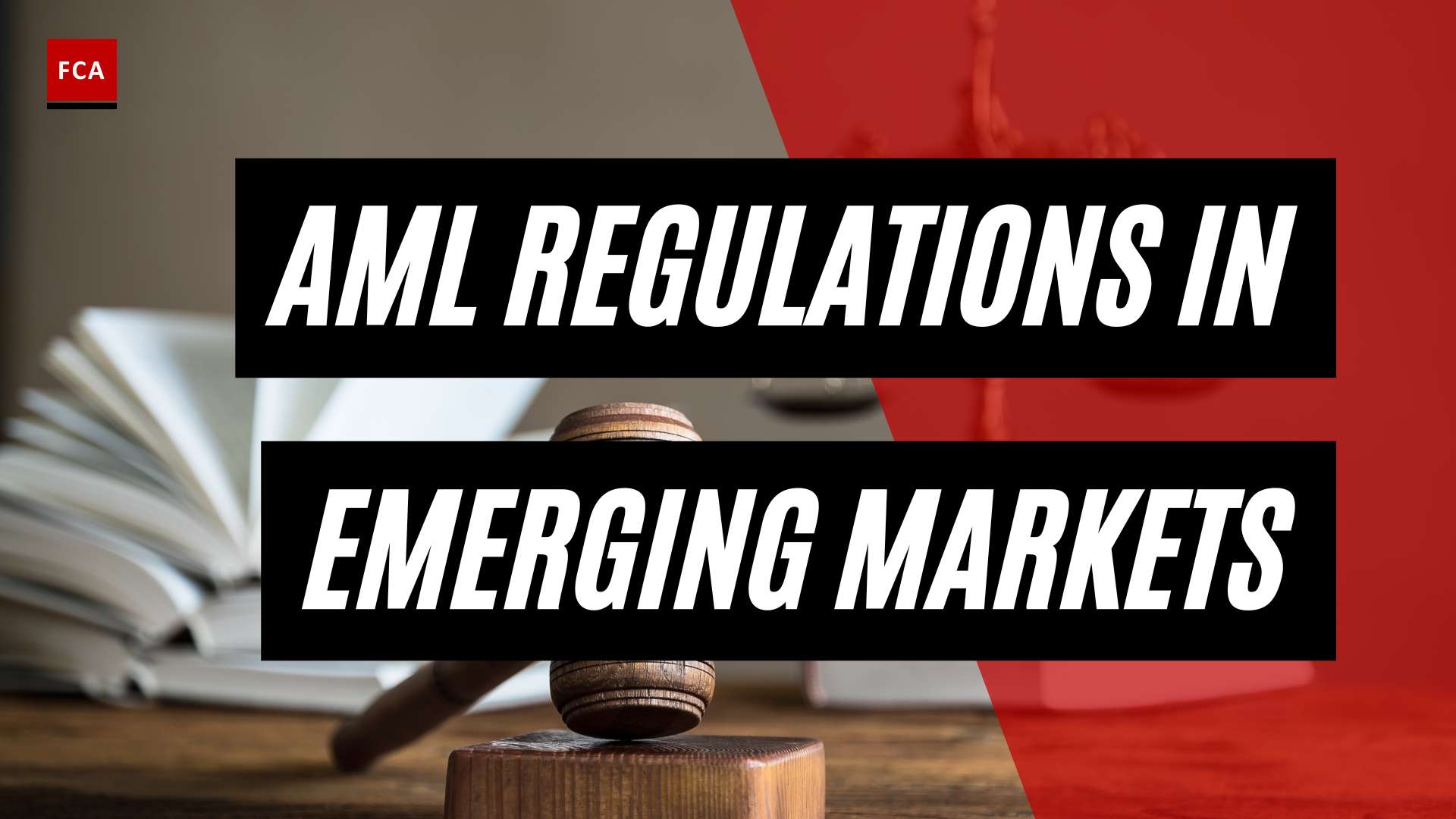Regulatory Requirements for AML Training
To effectively combat money laundering and terrorist financing, regulatory bodies have established specific requirements for Anti-Money Laundering (AML) training. This section will provide an overview of the regulatory obligations, the importance of AML training for reporting entities, the responsibilities of the Board of Directors, and the necessity of AML training for board members.
Overview of AML Compliance Obligations
AML compliance places significant obligations on reporting entities, requiring them to establish and maintain an AML/CFT (Counter Financing of Terrorism) compliance program. This includes appointing an AML Compliance Officer and implementing a risk assessment process. These obligations are designed to detect and prevent money laundering and terrorist financing activities (KPMG).
AML Training for Reporting Entities
Reporting entities, such as financial institutions, are required to provide AML training to their employees, including the Board of Directors. Training programs should cover legal and regulatory obligations relevant to the organization’s operations and ensure a full understanding of the requirements and implications of AML legislation (Great Chatwell Academy). AML training for employees is crucial to ensure they are equipped with the necessary knowledge and skills to identify and report suspicious activities, contribute to the organization’s AML compliance efforts, and mitigate the risks associated with money laundering.
Responsibilities of the Board of Directors
The Board of Directors of any financial institution has a fiduciary duty to ensure a robust compliance program is in place, as outlined in the Financial Action Task Force’s (FATF) International Guidelines. They are responsible for establishing an effective control framework and promoting a “culture of compliance” within the organization. This includes overseeing the implementation and effectiveness of the AML compliance program, approving policies and procedures, and providing strategic guidance and support.
AML Training for Board Members
To fulfill their responsibilities effectively, board members must have a thorough understanding of AML regulatory requirements. AML training tailored specifically for board members, heads of sub-committees, and senior management is necessary. The training aims to provide participants with an understanding of the AML framework, law enforcement mechanisms, and the consequences of non-compliance with AML regulations, such as reputation management, shareholder interests, and legal ramifications. The duration of the training course for board members and senior management typically lasts for 10 days to equip them with a clear understanding of compliance operations and duties within the organization.
By providing AML training for board members, organizations ensure that they have the knowledge and skills to support the development and implementation of an effective AML compliance program. AML training for board members is not only required for compliance purposes but also vital for maintaining an organization’s reputation, financial stability, and stakeholder relations (CBIZ).
Understanding the regulatory requirements for AML training is essential for organizations that aim to establish a culture of compliance, mitigate the risks associated with money laundering, and safeguard their reputation. The following sections will delve into the key components, best practices, and consequences of inadequate AML training for board members.
Key Components of AML Training for Board Members
To effectively fulfill their responsibilities in combating money laundering and terrorist financing, board members require comprehensive AML training that covers key components of anti-money laundering and counter-terrorist financing (AML/CFT) requirements. By understanding these components, board members can play a pivotal role in safeguarding their organizations. The key components of AML training for board members include:
Understanding AML/CFT Requirements
AML training for board members should begin with an overview of AML/CFT requirements. This includes familiarizing board members with the legal and regulatory framework surrounding AML, such as the obligations set forth by financial regulatory authorities and international guidelines. By understanding the requirements, board members can ensure that their organizations comply with applicable laws and regulations.
Recognizing Money Laundering and Terrorist Financing
Board members need to have a clear understanding of the nature of money laundering and terrorist financing. This includes recognizing the techniques and methods used by criminals to disguise the illicit origins of funds and the risks associated with financing terrorism. By being able to identify suspicious activities, board members can take appropriate measures to mitigate these risks and protect their organizations.
Identifying and Mitigating AML Risks
Another crucial component of AML training for board members is the ability to identify and assess AML risks specific to their organizations. This involves understanding the vulnerabilities and potential exposure to money laundering and terrorist financing, as well as the impact these risks may have on the organization’s reputation, financial stability, and legal standing. Board members should be equipped with the knowledge and tools to implement effective risk mitigation strategies and controls.
Organization-Specific Policies and Procedures
Board members must also be well-versed in their organization’s AML policies, procedures, and systems. AML training should provide board members with a thorough understanding of the internal controls and frameworks in place to combat money laundering and terrorist financing within their specific industry and jurisdiction. By being familiar with these organization-specific policies and procedures, board members can effectively oversee and monitor AML compliance.
By addressing these key components in AML training for board members, organizations can ensure that their board members possess the necessary knowledge and skills to fulfill their responsibilities in combating money laundering and terrorist financing. It is important to tailor the training to the roles and responsibilities of board members, providing them with real-world examples and case studies to enhance their understanding. Regularly updating the training content to reflect regulatory developments is also essential to keep board members informed and equipped to address evolving AML challenges.
Importance of AML Training for Board Members
When it comes to anti-money laundering (AML) compliance, board members play a vital role in ensuring that organizations meet their regulatory obligations and maintain a strong culture of compliance. AML training specific to board members is essential for several reasons:
Ensuring Compliance with AML Legislation
Board members have a fiduciary duty to ensure that their organizations establish and maintain a robust AML compliance program. AML compliance places significant obligations on reporting entities, including the appointment of an AML Compliance Officer and the implementation of a risk assessment process. By receiving comprehensive AML training, board members can better understand their compliance responsibilities and help guide their organization in meeting regulatory requirements.
Mitigating Risks Associated with Money Laundering
Effective AML training for board members helps them recognize the risks associated with money laundering and terrorist financing. By understanding the methods and indicators of money laundering, board members can actively contribute to the development and implementation of appropriate controls and risk mitigation strategies. This knowledge enables them to make informed decisions, ensuring that their organizations are equipped to detect and prevent illicit financial activities.
Safeguarding the Organization’s Reputation
Reputation is crucial for any organization, and a strong AML compliance program is an essential component of maintaining a positive reputation. Board members who receive proper AML training can contribute to the establishment of an effective control framework and promote a “culture of compliance” within their organizations (Skills for Africa). By doing so, they help safeguard the organization’s reputation by demonstrating a commitment to ethical practices and responsible financial management.
Inadequate AML training for board members can have severe consequences, including regulatory scrutiny, legal consequences, and reputational damage. Organizations that fail to meet their AML compliance obligations expose themselves to significant risks, which can lead to financial instability and strained relationships with stakeholders, including the board of directors.
By prioritizing AML training for board members, organizations can ensure that their leadership understands the importance of AML compliance, mitigates risks associated with money laundering, and actively contributes to safeguarding the organization’s reputation. This commitment to AML training demonstrates a dedication to regulatory compliance, ethical conduct, and the overall financial well-being of the organization.
Best Practices for AML Training for Board Members
To ensure effective AML training for board members, it is essential to implement best practices that address their specific roles, responsibilities, and risks within the organization. By tailoring the training to board members’ needs, incorporating real-world examples and case studies, and keeping the training up-to-date with regulatory developments, organizations can enhance their AML compliance efforts.
Tailoring Training to Board Members’ Roles and Responsibilities
AML training for board members should be designed to provide a clear understanding of their obligations and the implications of AML legislation (Great Chatwell Academy). The training should go beyond standard industry knowledge and include institution-specific examples that resonate with board members (Baker Tilly). This tailored approach ensures that board members have the necessary knowledge to effectively oversee the organization’s AML compliance program.
Incorporating Real-World Examples and Case Studies
To enhance board members’ understanding of the complexities and challenges of money laundering and terrorist financing, AML training should incorporate real-world examples and case studies. By analyzing actual scenarios, board members can apply their knowledge to practical situations, improving their ability to identify and address potential AML risks.
Keeping Training Up-to-Date with Regulatory Developments
The landscape of AML regulations and money laundering trends is constantly evolving. It is crucial to keep AML training for board members up-to-date with the latest regulatory developments to combat financial crime effectively. Regularly scheduled training sessions should be conducted to ensure that board members are aware of changes and new requirements in AML regulations (Federal Financial Institutions Examination Council). This proactive approach allows board members to stay informed and adapt their oversight strategies accordingly.
By following these best practices, organizations can enhance the effectiveness of AML training for board members. Tailoring the training to their roles and responsibilities, incorporating real-world examples and case studies, and keeping the training up-to-date with regulatory developments will empower board members to oversee the organization’s AML compliance program effectively. This, in turn, supports the organization in ensuring compliance with AML legislation, mitigating risks associated with money laundering, and safeguarding its reputation.
Consequences of Inadequate AML Training for Board Members
When it comes to anti-money laundering (AML) compliance, board members play a crucial role in overseeing and ensuring the effectiveness of an organization’s AML program. Inadequate AML training for board members can have serious consequences, both from a regulatory and reputational standpoint. Let’s explore the potential ramifications of insufficient AML training for board members.
Regulatory Scrutiny and Legal Consequences
Organizations with inadequate AML programs expose themselves to regulatory scrutiny and legal consequences. Regulatory bodies closely monitor compliance with AML regulations, and failure to meet the required standards can result in severe penalties and fines. Financial institutions that violate AML regulations can face civil and criminal penalties, including significant fines and even imprisonment for individuals involved. The Bank Secrecy Act (BSA) of 1970, for example, establishes compliance obligations for financial institutions and imposes penalties of up to $500,000 in fines, imprisonment for up to ten years, or both for non-compliance. Additionally, the Office of Foreign Assets Control (OFAC) administers and enforces US sanctions, and violations of AML sanctions regulations can lead to fines and penalties of up to $20 million and imprisonment of up to 30 years.
Reputational Damage and Stakeholder Relations
Inadequate AML training for board members can also have a detrimental impact on an organization’s reputation and stakeholder relations. AML breaches and the subsequent negative publicity can erode trust among customers, investors, and other stakeholders. Reputational damage can be long-lasting and may lead to a loss of business opportunities, decreased market value, and strained relationships with key stakeholders, including the board of directors. It is crucial for board members to understand the importance of AML compliance and the role they play in safeguarding the organization’s reputation.
Impact on the Organization’s Financial Stability
Neglecting AML training for board members can have significant financial implications for an organization. AML-related fines, legal fees, and the cost of remediation efforts can be substantial, impacting the organization’s financial stability. In extreme cases, repeat AML violations may result in regulatory restrictions or even the revocation of licenses, severely disrupting the organization’s ability to operate. By investing in comprehensive AML training for board members, organizations can minimize the risk of financial instability and ensure compliance with AML legislation.
To avoid these consequences, organizations must prioritize AML training for their board members. By providing comprehensive and up-to-date training on AML regulations, money laundering detection, and risk mitigation strategies, board members can effectively fulfill their oversight responsibilities. A well-trained board can actively contribute to the establishment of a robust AML compliance program, protecting the organization from regulatory penalties, reputational damage, and financial instability.
To further enhance AML expertise, organizations can also consider AML training certification programs tailored specifically for board members. These programs provide in-depth knowledge of AML regulations, best practices, and emerging trends, equipping board members with the necessary skills to make informed decisions and guide the organization’s AML efforts.
Creating a Culture of Compliance
To effectively navigate the complex landscape of anti-money laundering (AML) regulations, it is crucial for organizations to establish a robust AML compliance program. This includes designating a BSA/AML Compliance Officer and providing comprehensive training to employees. By doing so, organizations can create a culture of compliance, ensuring adherence to regulatory requirements and safeguarding against illicit financial activities.
Establishing a Robust AML Compliance Program
The Board of Directors (BOD) plays a crucial role in establishing an effective AML compliance program. As outlined in FATF’s International Guidelines, the BOD has a fiduciary duty to ensure that a robust compliance program is in place. This includes creating an effective control framework and promoting a “culture of compliance” within the organization (Skills for Africa).
To establish a robust AML compliance program, the BOD should:
- Develop and implement AML policies, procedures, and internal controls.
- Appoint a designated BSA/AML Compliance Officer who is responsible for overseeing the compliance program.
- Allocate adequate resources to support the compliance efforts.
- Provide oversight and regularly review the effectiveness of the compliance program.
Designating a BSA/AML Compliance Officer
Designating a BSA/AML Compliance Officer is crucial for the successful implementation of an AML compliance program. This individual is responsible for understanding the details of compliance, leading the development of the compliance program, ensuring its implementation, and staying updated on regulatory changes (LowerRiskGroup).
The key responsibilities of a BSA/AML Compliance Officer include:
- Conducting risk assessments to identify and assess AML risks.
- Developing and implementing policies, procedures, and controls to mitigate identified risks.
- Monitoring transactions and activities for suspicious or unusual patterns.
- Reporting suspicious activities to the appropriate authorities.
- Keeping abreast of regulatory changes and updating the compliance program accordingly.
Training Employees in AML Compliance
Employees throughout the organization have a role to play in AML compliance. It is essential to provide them with comprehensive training tailored to their functional roles and responsibilities. Training should cover the following areas:
- Understanding AML/CFT requirements and the regulatory framework.
- Recognizing the warning signs of money laundering and terrorist financing.
- Identifying and mitigating AML risks specific to their roles.
- Following organization-specific policies and procedures to ensure compliance.
By training employees in AML compliance, organizations empower them to be vigilant and proactive in identifying and reporting suspicious activities. This helps to ensure that the organization remains compliant with AML legislation and regulations.
To maintain the effectiveness of the AML training program, organizations should regularly assess the training needs of employees, provide refresher courses, and keep employees informed about regulatory developments. This ensures that employees stay up to date with evolving AML requirements and are equipped to fulfill their compliance obligations.
By establishing a culture of compliance through a robust AML compliance program, designating a BSA/AML Compliance Officer, and providing comprehensive training to employees, organizations can effectively safeguard against money laundering and protect their reputation in an ever-changing regulatory landscape.
Documentation and Monitoring
When it comes to AML training for board members, documentation and monitoring play a crucial role in ensuring the effectiveness of the training program and demonstrating the organization’s commitment to compliance. Proper documentation allows for transparency, accountability, and the ability to track the progress of training efforts. It also provides evidence of compliance for auditors, examiners, and regulatory authorities. Let’s explore the importance of documenting training programs, incorporating testing and feedback, and maintaining oversight and evaluation.
Importance of Documenting Training Programs
Documentation of AML training programs is an integral part of the compliance program, indicating the organization’s commitment to compliance and translating risk assessments and risk profiles into effective operations (LowerRiskGroup). It is essential to maintain comprehensive records of training sessions, including training materials, dates of sessions, attendance records, and any failures to complete required training. These records should be available for review by auditors or examiners.
Documenting training programs serves several purposes:
- Transparency: Clear documentation demonstrates the organization’s commitment to compliance and provides transparency for internal and external stakeholders.
- Accountability: Documentation holds individuals accountable for completing required training and ensures that training efforts are consistent and thorough.
- Evidence of Compliance: Documentation serves as evidence that the organization is meeting regulatory requirements and maintaining an adequate AML training program.
- Tracking and Evaluation: Documentation allows for tracking attendance and completion of training, enabling the organization to evaluate the effectiveness of the program and make improvements as needed.
Incorporating Testing and Feedback
Regularly scheduled testing and assessment are essential components of an effective AML training program for board members. Testing helps gauge the knowledge and understanding of board members regarding AML/CFT requirements, money laundering, terrorist financing, and AML risks (Baker Tilly). By incorporating testing and feedback, organizations can:
- Assess Knowledge: Testing provides an opportunity to evaluate board members’ understanding of AML concepts and their ability to apply them in real-world scenarios.
- Identify Gaps: Testing helps identify areas where additional training or clarification may be necessary.
- Gather Feedback: Feedback from board members allows organizations to continually improve and refine their AML training programs.
- Demonstrate Compliance Efforts: Documentation of testing and feedback serves as evidence of ongoing training efforts and the organization’s commitment to AML compliance.
Maintaining Oversight and Evaluation
Oversight and evaluation are critical for ensuring the ongoing effectiveness of the AML training program for board members. Organizations should establish processes to monitor and evaluate the training program, ensuring that it remains up-to-date with regulatory developments and aligns with the organization’s risk profile and AML compliance objectives (Great Chatwell Academy). Key considerations for maintaining oversight and evaluation include:
- Regular Review: Regularly review and update the training program to reflect changes in AML regulations, internal policies and procedures, products, services, customers, and geographic locations.
- Board Involvement: Maintain board involvement in overseeing the effectiveness of the training program and ensuring that it aligns with the organization’s strategic objectives.
- Ongoing Monitoring: Continuously monitor the training program to identify areas for improvement, address emerging risks, and adapt to changing compliance requirements.
- Evaluation of Outcomes: Evaluate the outcomes of the training program, including the effectiveness of the training materials, delivery methods, and overall impact on board members’ knowledge and understanding.
By documenting training programs, incorporating testing and feedback, and maintaining oversight and evaluation, organizations can ensure the effectiveness of their AML training efforts for board members. These practices demonstrate a commitment to compliance, help mitigate risks associated with money laundering, and safeguard the organization’s reputation.
AML Training Requirements in Different Jurisdictions
Compliance with Anti-Money Laundering (AML) regulations is crucial for organizations across the globe. Different jurisdictions have established specific requirements for AML training to ensure that board members are equipped with the necessary knowledge and skills to fulfill their responsibilities in preventing money laundering and terrorist financing. In this section, we will explore the AML training requirements in New Zealand, the United States, and the European Union.
AML Training Requirements in New Zealand
In New Zealand, the Anti-Money Laundering and Countering Financing of Terrorism (AML/CFT) Act was passed in 2009, with the requirements coming into effect in July 2013. The Reserve Bank of New Zealand and the Financial Markets Authority are responsible for ensuring compliance with AML requirements across different sectors.
Under New Zealand’s AML/CFT Act, reporting entities are required to provide AML training to the Board of Directors. This training aims to ensure that board members understand the implications of money laundering and financing of terrorism, their obligations under the AML/CFT Act, and the potential consequences of non-compliance (KPMG).
AML Training Requirements in the United States
In the United States, the Financial Crimes Enforcement Network (FinCEN) is responsible for enforcing AML regulations. While there are no specific federal requirements for AML training for board members, industry best practices suggest that board members should have a basic understanding of the fundamental aspects of AML risk control framework to effectively oversee responsibilities.
Financial institutions in the U.S. are required to provide AML training to their employees, including board members, as part of their compliance programs. The content of the training should cover the legal and regulatory obligations relevant to the organization’s operations and ensure that board members can effectively fulfill their responsibilities in preventing money laundering and terrorist financing.
AML Training Requirements in the European Union
In the European Union (EU), AML training requirements vary among member states. The EU’s Fourth Anti-Money Laundering Directive (AMLD4) sets a common framework for AML regulations across member states. However, each member state has the flexibility to implement the directive based on their national laws and requirements.
Board members of financial institutions operating in the EU are expected to receive AML training as part of their overall compliance obligations. The training should be tailored to the specific roles, responsibilities, and risks faced by the board members, ensuring that they are equipped to detect and respond to potential money laundering activities within the organization.
It is important for organizations to stay updated on the AML training requirements in their respective jurisdictions to ensure compliance with local regulations. By providing comprehensive AML training to board members, organizations can enhance their ability to prevent money laundering, mitigate associated risks, and safeguard their reputation and financial stability.








